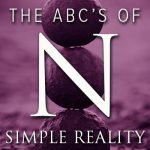
Is nothingness the opposite of “thingness?” Let’s find out. Alexander Stern in his article entitled “So is that a Thing?” explores the phenomena of “thingness.” “Speakers and writers of American English have recently taken to identifying a staggering and constantly changing array of trends, events, memes, products, lifestyle choices and phenomena of nearly every kind with a single label—a thing.”[i]
We needn’t feel we are entering a chaotic world as long as we stay grounded in a handful of basic principles. The key word above is “change” which we note is more deeply understood as “impermanence.” Phenomena do not last.
“In conversation, mention of a surprising fad, behavior or event is now often met with the question, ‘Is that actually a thing?’” From the perspective of P-B many of us would think a bit and answer yes or no, but how would we arrive at our determination? What counts as a thing?
Things are aspects of a culture’s worldview such as beliefs, attitudes and values and the behaviors associated with that worldview. “It seems likely that ‘a thing’ comes from the phrase the coolest/newest, latest thing.”[ii] For example, information itself can be a thing and our information technology inundates us with an endless supply of possible “latest things.”
The security energy center of the false self has even made us things. We are not only looking for or shopping for the latest thing but the Web is used to target us as a buyer of the latest thing. “Even as they arise outside it, things owe their existence as things to the Internet. Google is thus always the arbiter of the question, ‘Is that a real thing?’”[iii]
It is now time to shift to the perspective of P-A to bring the whole phenomenal world into focus. “‘A thing,’ then, corresponds to a real need we have, to catalog and group together the items of cultural experience, while keeping them at a sufficient distance so that we can at least feign unified consciousness in the face of a world gone to pieces.”[iv]
Is Alexander Stern correct in this assessment of why we need to know whether a thing is a thing or not? No he is not and here’s why.
Yes, the world has gone to pieces with a series of splits discussed elsewhere in the content of the Simple Reality Project. This shattering of Oneness occurs only in the human mind. We not only feel we need to catalog and group cultural experience but to compulsively pursue things in order to deny and distract ourselves from our suffering which, ironically, we ourselves create.
We identify with our bodies, our minds and our emotions and also with the phenomenal world of things which deludes us into accepting a false identity. And being mesmerized by this world of “form” which has no substantial existence, we have little chance of distinguishing illusion from Simple Reality. In truth the world in which we actually find ourselves is a paradigm of “no-thingness.”
“As a matter of fact, human moods and reactions to the encounter with Nothingness vary considerably from person to person and from culture to culture. The Chinese Taoists found the Great Void tranquilizing, peaceful, even joyful. For the Buddhists in India, the idea of Nothing evoked a mood of universal compassion for all creatures caught in the toils of an existence that is ultimately groundless. In the traditional culture of Japan the idea of Nothingness pervades the exquisite modes of aesthetic feeling displayed in painting, architecture, and even the ceremonial rituals of daily life. But Western man, up to his neck in things, objects, and the business of mastering them, recoils with anxiety from any possible encounter with Nothingness and labels talk of it as ‘negative’—which is to say, morally reprehensible. Clearly, then the moods with which men react to this Nothing vary according to time, place, and cultural conditioning; but what is at issue here is not the mood with which one ought to confront such a presence, but the reality of the presence itself.”[v]
The world of “things,” the world of “form” cannot be mastered since it has no substantial existence. Trying to get control of our mind, body and emotions has led to a disastrous experience replete with suffering. The Simple Reality Project has articulated a worldview of Oneness providing a context for the True self to be revealed and a practice wherein the phenomenal world is transcended. Then the tranquilizing, joyful and peaceful world of “nothingness” can be experienced. So the next time we hear the question, Is that a thing? we can relax and say, No, nothing is.
[i] Stern, Alexander. “So, Is That A Thing?” The New York Times. April 17, 2016, p. 9.
[ii] Ibid.
[iii] Ibid.
[iv] Ibid.
[v] Barrett, William. Irrational Man: A Study in Existential Philosophy. Garden City, New York: Doubleday, 1958, p. 285.


